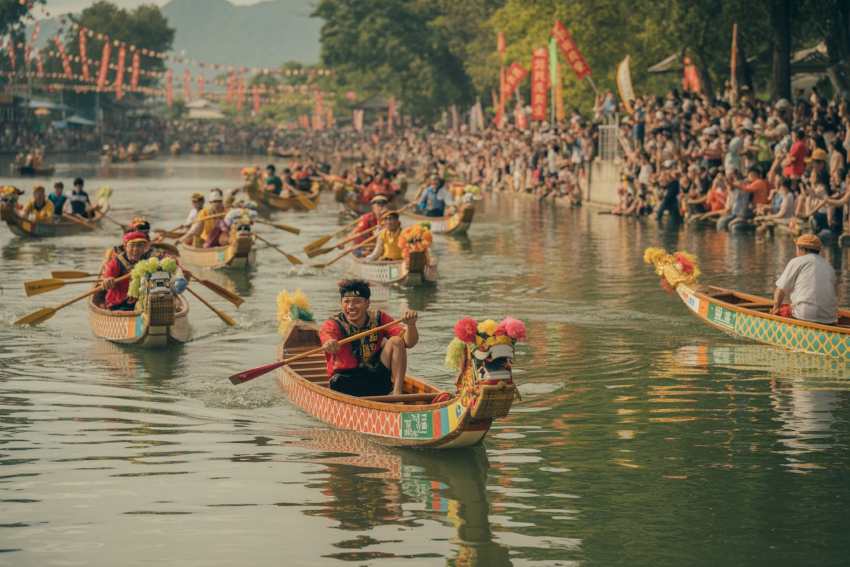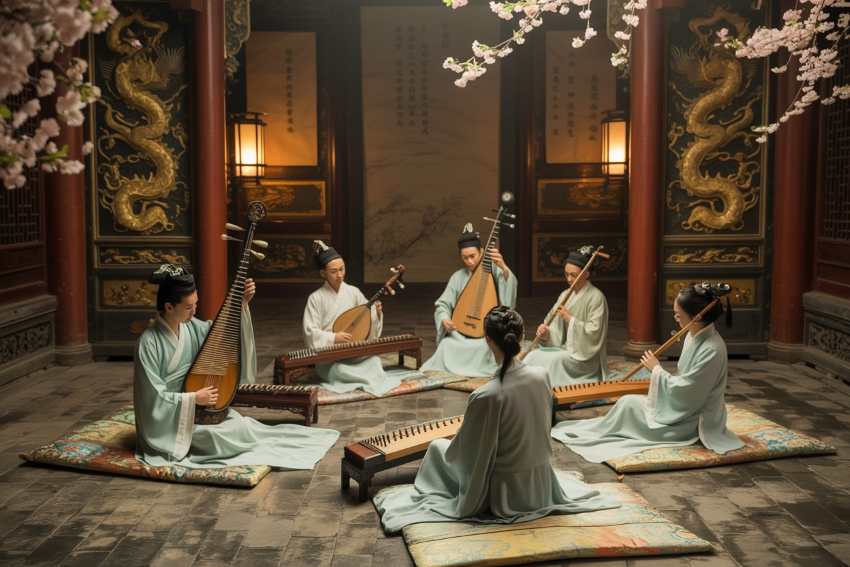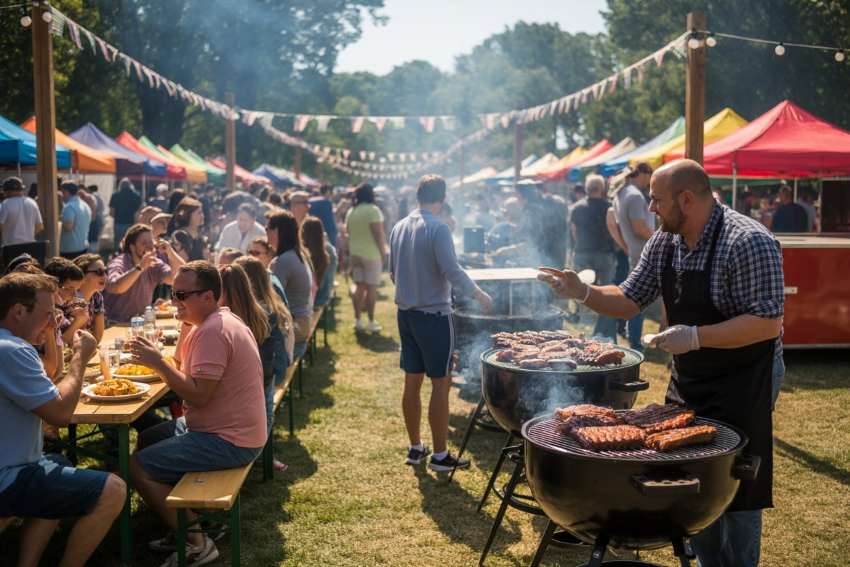Siem Reap Province Welcomes Over 360,000 Tourists During Water Festival, Driving Local Tourism and Economic Impact in Cambodia: Know More

Siem Reap, Cambodia, a destination renowned for its ancient temples and vibrant cultural experiences, witnessed a major tourism surge during the Water Festival, also known as the Royal Boat Festival, held from November 4 to 6, 2025. Over the three-day celebration, Siem Reap Province saw a total of approximately 368,246 tourists, a mix of both national and international visitors, significantly boosting the local tourism sector.
This year’s festival was a unique cultural spectacle, drawing thousands of people from across Cambodia and beyond. The event, which took place at the Royal Palace Gardens and along the Siem Reap River, featured a series of traditional activities, including boat races, a floating market, and cultural performances. These activities not only enhanced the cultural richness of the region but also contributed to an impressive surge in tourism numbers.
A Strong Surge in Local and International Tourism
Of the 368,246 tourists who visited Siem Reap during the festival, approximately 358,600 were national tourists, highlighting the festival’s strong domestic appeal. Foreign visitors, although fewer, still accounted for a significant portion, with 9,646 international tourists attending the festival. This balanced mix of visitors underscores Siem Reap’s continuing popularity as a domestic travel hub, while its cultural festivals are also successfully attracting global attention.
The surge in visitors during this time is indicative of a growing trend in Cambodia’s tourism sector, where cultural festivals play an increasingly important role in not only attracting tourists but also stimulating the local economy. The festival, with its rich cultural offerings, provides a perfect example of how well-designed cultural tourism events can drive local economies, support businesses, and create long-lasting impacts for the region.
Festival Highlights and Activities
The Royal Boat Festival is one of the most iconic events in Cambodia’s cultural calendar, celebrating the country’s rich maritime heritage. This year’s festival featured spectacular boat races along the Siem Reap River, drawing crowds eager to witness the competitive spirit and skill of Cambodian boatmen. The races were accompanied by vibrant celebrations and performances that showcased the region’s deep-rooted cultural traditions, providing visitors with a chance to immerse themselves in the local way of life.
One of the standout attractions during the festival was the floating market program along the Siem Reap River. The floating market, with its array of local produce, handicrafts, and food stalls, brought a taste of traditional Cambodian commerce to visitors. This market allowed tourists to interact directly with local vendors, offering a unique shopping experience that added to the festival’s charm.
In addition to these events, Siem Reap Province also hosted various cultural exhibitions and performances designed to immerse visitors in Cambodian traditions. This variety of activities ensured that there was something for every type of tourist, from history buffs and cultural enthusiasts to food lovers and shopaholics.
Impact on the Local Economy and Businesses
The influx of tourists during the Water Festival has had a significant impact on Siem Reap’s local economy. Tourism is a key driver of economic activity in the region, with hotels, restaurants, transport services, and local businesses seeing an uptick in sales during the festival period. Many hotels, which often experience quieter seasons following the peak tourist periods, reported full occupancy rates during the event. Restaurants and street vendors capitalized on the increased foot traffic by offering special festival menus and performances.
Transport services, particularly those offering river cruises and boat rides, also saw a surge in bookings, as tourists flocked to the Siem Reap River for both sightseeing and entertainment. The floating market program added another layer of interest, with vendors offering unique items that catered to both locals and tourists alike. This boost in demand not only benefited the direct service providers but also had a ripple effect throughout the broader Siem Reap economy, supporting jobs and generating income for local workers.
The tourism growth driven by the festival also has longer-term benefits. The positive experiences of visitors will likely translate into return trips and positive word-of-mouth recommendations, further solidifying Siem Reap as a must-visit destination in Cambodia. The event’s ability to draw international attention highlights Cambodia’s expanding tourism potential, not just for historical and religious sites like Angkor Wat, but also for its vibrant cultural festivals and experiences.
Strengthening Cambodia’s Tourism Strategy
The success of the Royal Boat Festival reflects Cambodia’s broader strategy to promote tourism beyond its iconic temples. In recent years, Siem Reap has worked hard to position itself as a cultural hub, with an increasing number of events designed to highlight the nation’s cultural and historical wealth. The focus on experiential tourism, which involves engaging visitors in the local culture and traditions, is an integral part of this strategy.
Furthermore, the Cambodian government and local authorities have worked collaboratively to improve the infrastructure and services available to tourists. This has included the development of better transport links, upgrades to accommodation facilities, and the promotion of Siem Reap as a year-round destination rather than just a peak-season location.
This year’s festival is a testament to the success of these efforts, showing that when the right cultural activities are combined with effective promotion, both local and international tourism can thrive. The festival serves as a shining example of how cultural tourism can create meaningful experiences for visitors while driving economic growth for local communities.
Looking Ahead: Sustainable Tourism and Future Growth
As Siem Reap continues to grow as a tourist destination, there is an increasing emphasis on sustainable tourism practices. The region is already seeing the benefits of eco-tourism, where efforts are being made to preserve the natural environment while enhancing the tourist experience. With tourism numbers steadily rising, there is a growing need for sustainable initiatives that balance development with conservation.
Looking ahead, Siem Reap and other regions in Cambodia must focus on maintaining this balance. Ensuring that tourism continues to bring economic benefits while preserving the cultural and natural heritage of the area will be key to sustaining long-term growth. The local government has already committed to supporting environmentally responsible tourism practices, and initiatives such as eco-friendly hotels, community-based tourism, and cultural heritage preservation programs are expected to become more prevalent in the coming years.
The Water Festival and its associated events have provided a platform to showcase the region’s rich traditions and vibrant culture, while also bolstering Siem Reap’s tourism sector. With its growing appeal, both domestically and internationally, Siem Reap is well on its way to becoming one of Southeast Asia’s premier cultural tourism destinations.
Conclusion
Siem Reap Province’s Water Festival marked a significant achievement in Cambodia’s tourism calendar, drawing a record number of visitors and contributing positively to the local economy. Through its engaging cultural programs and the promotion of local businesses, the event demonstrated the transformative power of cultural tourism. As Siem Reap continues to innovate in this sector, the Royal Boat Festival serves as a blueprint for future tourism initiatives in Cambodia, ensuring that the region remains an attractive and sustainable destination for years to come.
The post Siem Reap Province Welcomes Over 360,000 Tourists During Water Festival, Driving Local Tourism and Economic Impact in Cambodia: Know More appeared first on Travel And Tour World.


